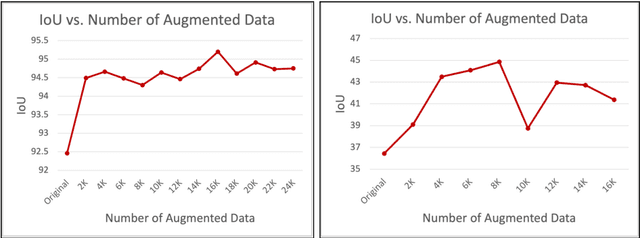Shenghao Zhou
Source-Free Bistable Fluidic Gripper for Size-Selective and Stiffness-Adaptive Grasping
Nov 05, 2025Abstract:Conventional fluid-driven soft grippers typically depend on external sources, which limit portability and long-term autonomy. This work introduces a self-contained soft gripper with fixed size that operates solely through internal liquid redistribution among three interconnected bistable snap-through chambers. When the top sensing chamber deforms upon contact, the displaced liquid triggers snap-through expansion of the grasping chambers, enabling stable and size-selective grasping without continuous energy input. The internal hydraulic feedback further allows passive adaptation of gripping pressure to object stiffness. This source-free and compact design opens new possibilities for lightweight, stiffness-adaptive fluid-driven manipulation in soft robotics, providing a feasible approach for targeted size-specific sampling and operation in underwater and field environments.
Learning IMU Bias with Diffusion Model
May 17, 2025Abstract:Motion sensing and tracking with IMU data is essential for spatial intelligence, which however is challenging due to the presence of time-varying stochastic bias. IMU bias is affected by various factors such as temperature and vibration, making it highly complex and difficult to model analytically. Recent data-driven approaches using deep learning have shown promise in predicting bias from IMU readings. However, these methods often treat the task as a regression problem, overlooking the stochatic nature of bias. In contrast, we model bias, conditioned on IMU readings, as a probabilistic distribution and design a conditional diffusion model to approximate this distribution. Through this approach, we achieve improved performance and make predictions that align more closely with the known behavior of bias.
Language in a Bottle: Language Model Guided Concept Bottlenecks for Interpretable Image Classification
Nov 21, 2022



Abstract:Concept Bottleneck Models (CBM) are inherently interpretable models that factor model decisions into human-readable concepts. They allow people to easily understand why a model is failing, a critical feature for high-stakes applications. CBMs require manually specified concepts and often under-perform their black box counterparts, preventing their broad adoption. We address these shortcomings and are first to show how to construct high-performance CBMs without manual specification of similar accuracy to black box models. Our approach, Language Guided Bottlenecks (LaBo), leverages a language model, GPT-3, to define a large space of possible bottlenecks. Given a problem domain, LaBo uses GPT-3 to produce factual sentences about categories to form candidate concepts. LaBo efficiently searches possible bottlenecks through a novel submodular utility that promotes the selection of discriminative and diverse information. Ultimately, GPT-3's sentential concepts can be aligned to images using CLIP, to form a bottleneck layer. Experiments demonstrate that LaBo is a highly effective prior for concepts important to visual recognition. In the evaluation with 11 diverse datasets, LaBo bottlenecks excel at few-shot classification: they are 11.7% more accurate than black box linear probes at 1 shot and comparable with more data. Overall, LaBo demonstrates that inherently interpretable models can be widely applied at similar, or better, performance than black box approaches.
Fine-Grained Egocentric Hand-Object Segmentation: Dataset, Model, and Applications
Aug 07, 2022



Abstract:Egocentric videos offer fine-grained information for high-fidelity modeling of human behaviors. Hands and interacting objects are one crucial aspect of understanding a viewer's behaviors and intentions. We provide a labeled dataset consisting of 11,243 egocentric images with per-pixel segmentation labels of hands and objects being interacted with during a diverse array of daily activities. Our dataset is the first to label detailed hand-object contact boundaries. We introduce a context-aware compositional data augmentation technique to adapt to out-of-distribution YouTube egocentric video. We show that our robust hand-object segmentation model and dataset can serve as a foundational tool to boost or enable several downstream vision applications, including hand state classification, video activity recognition, 3D mesh reconstruction of hand-object interactions, and video inpainting of hand-object foregrounds in egocentric videos. Dataset and code are available at: https://github.com/owenzlz/EgoHOS
 Add to Chrome
Add to Chrome Add to Firefox
Add to Firefox Add to Edge
Add to Edge